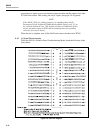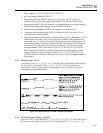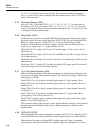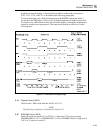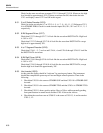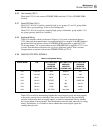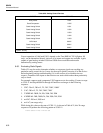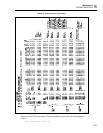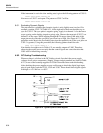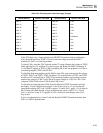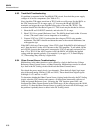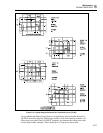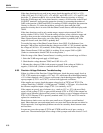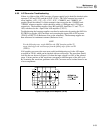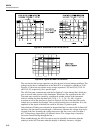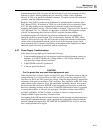
8842A
Instruction Manual
6-54
If the instrument is not in the slow reading rate, it gives the following pattern at U305-5:
000000 00000 000000 0000000 000
Next move to U305-7 and repeat. The pattern at U305-7 will be:
000000 00000 000000 1111111 000
6-61. Evaluating Dynamic Signals
The procedure for evaluating the dynamic signals is only slightly more involved. For
example, consider U302-7 in Table 6-21. At the right end of that row the table says to
sync on U302-3. The sync pulse is negative-going. Apply it to channel 1 of a dual-trace
scope syncing on the leading (negative-going) edge. Observe the target pin (U302-7) on
channel 2 of the scope. While stepping through the 24 ranges observe the state of the
target pin exactly when the sync pulse goes from low to high. (See Figure 6-12.) (This
procedure works best in the fast reading rate since the repetition rate of the sync pulse on
U302-3 is greater.) Using this procedure, the following pattern should be seen:
00000 11111 000000 000000 0 1
Note that the last eight rows in Table 6-21 are actually outputs of U803. Therefore,
observing those pins proves not only that the control signals are correct but also that
U803 itself is functioning correctly.
6-62. DC Scaling Troubleshooting
Whenever there is a failure in the DC Scaling circuit, first check the power supply
voltages for all active components. (Supply voltages and pin numbers are listed in Table
6-22.) A test of the bootstrap supplies for U306 is described later under this heading.
After checking the power supplies, use an oscilloscope to check the digital logic input
pins of quad analog switches U301, U302 and U303. These should show digital signals
with high =>+3V and low =<+0.5V.
f6-12.wmf
Figure 6-12. Typical Dynamic Control Signals



